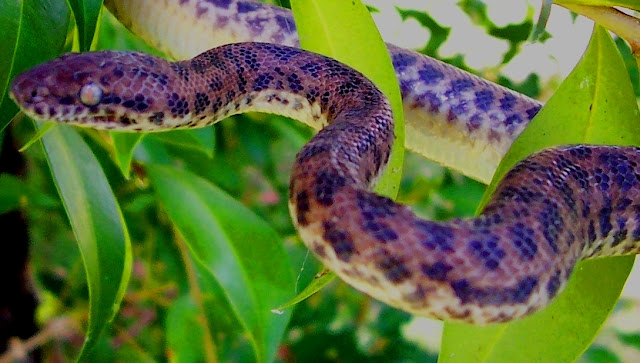Bluehead Wrasse or Thalassoma bifasciatum are members of the family Ladredae. This species is endemic to the Caribbean and the Gulf of Mexico with populations occurring as far south as the coastline of central Brazil.
 |
| Blue-headed wrasse (Photo credit: Wikipedia) |
Bluehead wrasses are medium sized, cigar shaped, fish. They grow to a maximum adult length of 7 inches. This species exhibits dramatic changes in coloration in relation to gender and age. Juveniles are typically yellow with white underbellies and black markings along their bodies and on their fins. Adult females are completely turquoise in color with two vertical black bars. It is in the adult male that the truly exotic color variations of this species can be witnessed. They have blue heads as their name would indicate. A set of three thick vertical bands separate the head from the main body. The first and the third bands are black. These two bands are clearly defined by a white bar in the middle. The male's main body is either turquoise with golden highlights or gold with turquoise highlights.
Their pitch-forked tails are colorless and transparent in the center with the same coloration as their heads outlined with black pigmentation at the top and bottom of the caudal fin. Regardless of age or gender, this species has thick, paddle-shaped pectoral fins. They are exceptionally fast swimmers. This is a short lived species. Their live span rarely exceeds 2 years. This fish is also marketed under the names blunt-headed wrasse or simply bluehead. Blunt bears reference to wrasse species with more elongated snouts.
Juveniles and the females of this species have peaceful temperaments. Adult males lean more toward the semi-aggressive side. They may tend to harass smaller, more mild mannered, fish. A new arrival to the aquarium might elicit initial territorial behavior, especially toward those of similar shape. All things considered, these fish make suitable candidates for multi-species aquariums. They should not be kept with larger more, aggressive species. The bluehead's suitability for a marine reef tank depends on its inhabitants. They will not bother plant life, corals or other forms of stationary fauna. But they will eat crustaceans and other mobile invertebrates. This species is rated at a moderate care level.
Any saltwater aquarist with intermediate experience should be able to keep them alive and healthy. They are, however, sensitive to unhealthy water parameters. A good quality filtration system and frequent water changes will help keep them in optimum condition. These are very active swimmers and will require plenty of open swimming space. They will instinctively seek out holes or cracks in rock formations to sleep in at night so you will want to provide them with plenty of aquarium décor or rock work. A minimum tank size of 75 gallons is recommended.
This is a carnivorous species. In the wild their diet consists of fish, small crustaceans and other invertebrates including worms. They will help rid your aquarium of pest species such as mantis shrimp and bristle worms. These fish take readily to aquarium food. Their diet can be further supplemented with fresh chopped seafood, and feeder shrimp. This is an extremely active species. They should be fed 3 times daily.
Bluehead wrasses are protogynous sequential hermaphrodites. They may begin their life cycle as either male or female. Females have ability to change gender should future prorogation of the species call for the demand. This fish has not been known to breed in captivity.
Technological advancements in the aquarium industry continually redefine the concept of "home aquarium owner." Just twenty years ago not even the biggest public aquarium was capable of keeping jellyfish alive in captivity. Now they make desktop Jellyfish Fish Tank Aquariums. And why would you want a jellyfish tank? Perhaps you should check out what the translucent bodies of Pet Moon Jellyfish look like under LED lighting. Pet Jellyfish give a whole new meaning to the term exotic pets. Article Source: EzineArticles |








